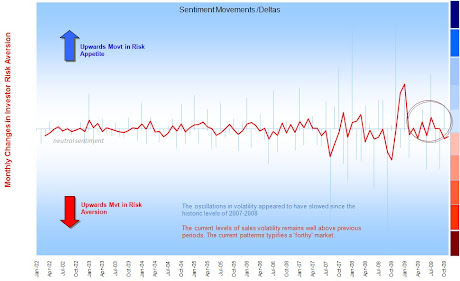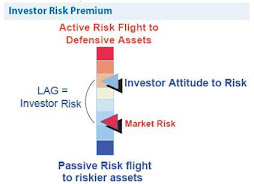Clown Consortium for Contrarians: A place for free-thinkers to swap investment ideas and challenge conventional wisdom. All views are independent and do not represent those of any organisation or employer.


Sunday, 16 October 2011
An honest account.. thank goodness no Black Swans..!!
Saturday, 6 August 2011
S&P downgrade of US Govt credit rating.. A question of ethics?!
A debtor that hasn't defaulted is not the same as one with no default risk.
We look at the US balances and question if paying debt with another debt is sound practice. The reality is that we have treated US debt as one big blank check and that has capitalised debt down the US food chain into GSEs, Muni etc. It it marks the divide between US and the rest of the world: the level of arrogance, patriotism and naivety of the US never cease to astound!
Also I saw no intervention re S&P ratings at the tme in a Market well reported as early as 2006. As part analysts, part auditors, part media they were victims like many of us. We cannot now disparage their conservatism after having criticised their earlier liberalism. Alas I think politics will come to bare but this remains a point of independence and S&Ps status as a credible global agency not a US puppet!
On the eve of an election year, Capital hill has played political games with the global economy
Investment U

Delta changes in risk aversion (Nov09)
Sentiment: The 'Lag' Effect

Investor perception of risk is rarely up to date
Global Consciousness Project (GCP) 'Dot'
Choosing Mutual Funds..
Bull versus Bear Investing; versus Herding
Let's get normal volatility out of the way first.. VaR-based toolkit.
What is the fuss with volatility.....
http://en.wikipedia.org/wiki/Geometric_Brownian_motion
*Stochastic models: treat the underlying security's volatility as a random process, governed by variables such as the price level of the underlying, the tendency of volatility to revert to some long-run mean value, and the variance of the volatility process itself, among others. Somtimes I use Markov chain as the easiest way to visualise and understand a random process: usually it's illustrated by the cat and the mouse:
This Markov chain then has 5 states:Suppose you have a timer and a row of five adjacent boxes, with a cat in the first box and a mouse in the fifth one at time zero. The cat and the mouse both jump to a random adjacent box when the timer advances. E.g. if the cat is in the second box and the mouse in the fourth one, the probability is one fourth that the cat will be in the first box and the mouse in the fifth after the timer advances. When the timer advances again, the probability is one that the cat is in box two and the mouse in box four. The cat eats the mouse if both end up in the same box, at which time the game ends. The random variable K gives the number of time steps the mouse stays in the game..
State 1: cat in the first box, mouse in the third box: (1, 3)
State 2: cat in the first box, mouse in the fifth box: (1, 5)
State 3: cat in the second box, mouse in the fourth box: (2, 4)
State 4: cat in the third box, mouse in the fifth box: (3, 5)
State 5: the cat ate the mouse and the game ended: F.
To show this for a fairly infinite number of price movements is somewhat less achievable but nonetheless that's what the clever bods have done..
Otherwise most of probability, I admit, is above my head unless it descends into some sort of practical application - BUT I get the sub-plot.. stop trying to predict future patterns from regressing past performance... show me the track record of a model (after it has been created) and I'll be one step closer to being converted.. I'll touch on stress testing, extreme analysis ('extremistan') and scenarios another day..
http://en.wikipedia.org/wiki/Black%E2%80%93Scholes"The Black–Scholes model disagrees with reality in a number of ways, some significant. It is widely employed as a useful approximation, but proper application requires understanding its limitations -blindly following the model exposes the user to unexpected risk. In short, while in the Black–Scholes model one can perfectly hedge options by simply Delta hedging, in practice there are many other sources of risk." Wikpedia
Active-Passive Investing Debate
Performance Patterns: **This deck is based on some work-based research so apologies for the confusing arguments - as a consequence the 'story' in the slides is a little muddy so I will re-jig this in the New Year to make my points clearer.** Passive-active purchase drivers in the UK are less differentiated/defined than perhaps elsewhere; the basic rules apply: What I did find was that there were interesting herding flows preceding, into and of the credit crunch. These were large asset-class movements: something which active managers would have little control of unless they ran absolute return type startegies. What my analysis showed is that an investor could manage a passive portfolio tactically to take advantage of large herding patterns. This involves risk, access to the right data, practice and above all discipline but I hope it will be a journey we can share!!
Lessons for 2010 - REIT Funds
The UK Investor - The Surprise Factor
The maps in the presentation (below) really help illustrate the suprise factor of the credit crunch.. little of the previous patterns would prepare the UK investor for what was about to come. The flows show that investors did not recognise the risks inherent in 2006-2008. This is because the industry uses conventional fund metrics, which were at best outputs not guides..!